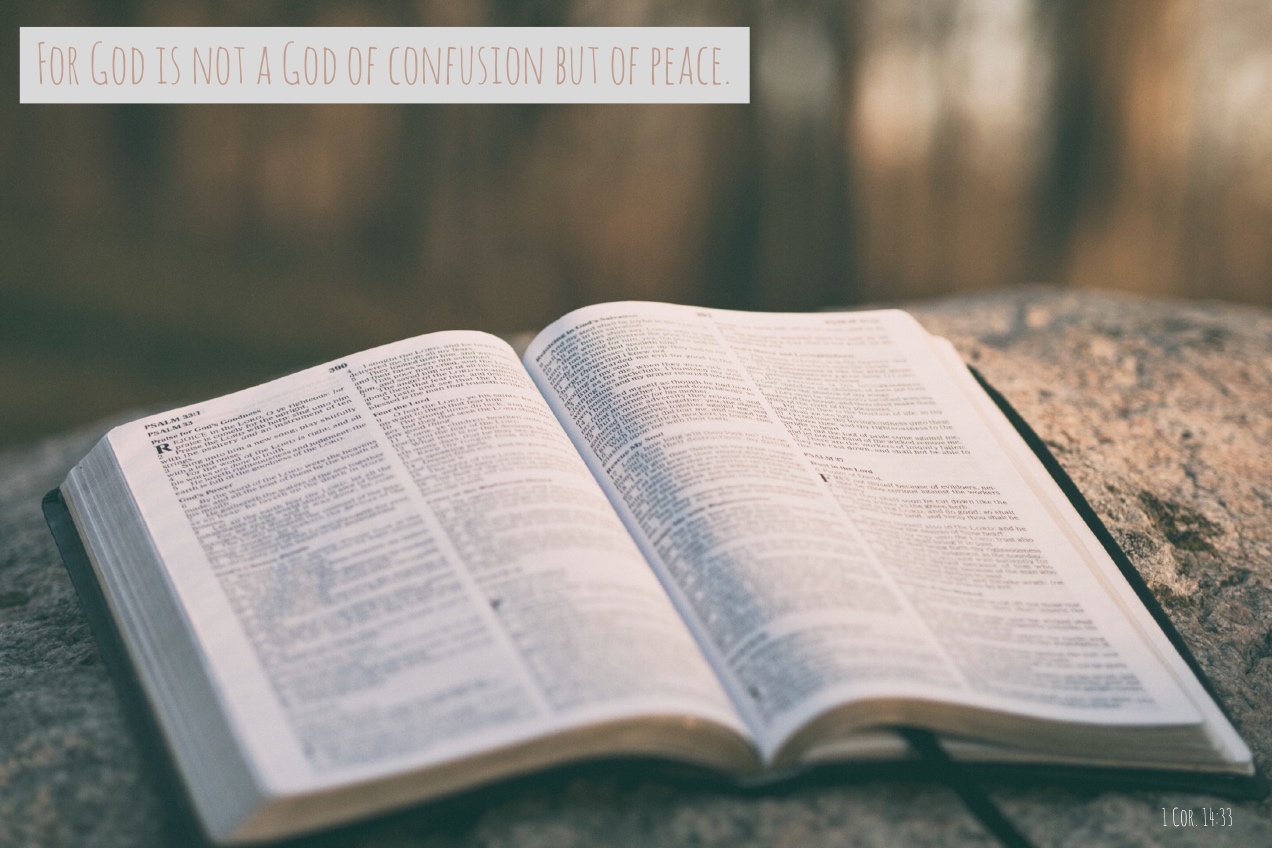“For God is not a God of confusion but of peace.”
— 1 Corinthians 14:33 RSV
At any given time, it seems that about 10 percent of our congregations are in some state of tension or conflict. In our relationships with other Lutheran and ecumenical partners, this appears to be a reality in all denominations. The Body of Christ in the world today is an all-too-human body filled with pastors, leaders and laity who are at the same time saints and sinners.
It was the same within the congregation in Corinth in the early Church, causing Paul to engage with them in the “Corinthian correspondence,” as he sought to address their conflict from afar.
In particular, the Corinthian congregation was divided over the gifts of the Holy Spirit and the practice of speaking in tongues in worship. This “Spirit-language” was often offered within the divine service as unintelligible praying with no interpretation, so that it was not edifying to the body as a whole. Considerable division arose in the congregation between those who had the gift of speaking in tongues and those who didn’t, and whether there was a place in worship for such uninterpreted speaking and praying.
Add to that what appears, from Paul’s writing, to be additional issues among worshipers, and we see that the community was fractured and fighting. Paul reminds them that this is not God’s intention for Christ’s Church at worship, “for God is not a God of confusion, but of peace.” Other translations have it “For God is not a God of disorder, division, chaos, but of peace.”
There is nothing more detrimental to the health, well-being and, yes, the mission and ministry of a congregation than confusion, disorder, division and chaos.
Congregations experiencing such things often wonder why it is that they never receive new members and why visitors may worship once but never return. Do they need to ask? Few want to be part of a community of faith where there is no peace and harmony.
While Paul is writing specifically about spiritual gifts and their use and abuse in the worshiping community in Corinth, what he says should be a reminder to every congregation in every church body — God desires order, not disorder, in his Church. Our God is a God of peace, not of chaos.
What guidance is there for congregations in conflict, wishing to avoid conflict, seeking to be at peace and ordered in a Christ-like manner?
First, follow your constitution. While congregational constitutions were not given by God on Mount Sinai, they are practical tools for structuring congregational life in community. Although not to be used as a hammer to beat members into submission, constitutions provide helpful guidance about responsibilities, practices and procedures intended to provide for healthy relationships, communication and decision-making. Constitutions also provide specific instruction about how to deal with conflict and disagreement, as well as issues related to difficult pastors, councils or members. Yes, every congregation, at some time, may have a difficult pastor, council or member. Sometimes, congregations have “bullies.”
Second, allow Scripture and your constitution to instruct you about how to deal with bullies in the congregation. In many circumstances, congregational leadership teams don’t know how to address the reality of bullies in their congregation, so they ignore the situation or try to placate the bullies, allowing them to dictate what will or will not happen in the congregation. Sometimes bullies are “shadow” leaders, attempting to manipulate decisions and behavior from the sidelines, and sometimes bullies may be elected members of the council. Of course, pastors may try to bully people as well.
Hear and heed, then, our Lord’s instruction and the wise counsel of Scripture. Love one another, as he loves us. Forgive not seven times, but seventy times seven times. Forbear with one another. Do not bear false witness. Speak the truth in love. In extreme cases, follow our Lord’s instructions in Matthew 18:15-20, which is usually the process prescribed in congregational constitutions.
Third, don’t be a bully! We sometimes feel so strongly about situations and circumstances in our beloved congregations that we don’t realize we are seeking our own wants, desires and agendas, rather than the good will of the congregation as a whole. Councils and congregations work best when they seek, first, to build consensus.
Consensus-building is aimed at helping the group decide, as a group, what is best for all. This means, at some point in the consensus-building process, that my will — my preference — yields to the will of the group. The goal in consensus-building is not for me to get my way, but for us, together, to determine what is best for all.
This is often lost on church leaders who bring worldly, secular notions into church leadership. This does not mean that there should be no disagreement, or that an individual may not seek to persuade the group as a whole. It does mean that, at some time, individuals willingly yield to the decision of the group. In this way, we move forward with decision-making in a way that brings unity, harmony and peace.
Finally, pastors and councils must remember that they are, together, a leadership team within the congregation. The NALC Model Constitution for Congregations states (Chapter 12.04):
The duties of the Church Council shall include the following:
+ To maintain supportive relationships with the pastor(s) and staff and help them annually to evaluate the fulfillment of their calling or employment.
+ To be examples individually and corporately of the style of life and ministry expected of all baptized persons.
+ To promote a congregational climate of peace and goodwill, and, as differences and conflicts arise, to foster resolution of such conflicts according to Biblical principles.
Together, the pastor and elected members comprise a leadership team, the council, sharing the above responsibilities. This requires abiding deeply and regularly in the Word of God. It means praying fervently for one another, for each and every member, and for guidance and direction. It also requires straightforward, loving communication, regular assessment and evaluation of ministry, goal-setting with specific, clearly defined action steps, and plenty of time spent in consensus-building. All with mutual love, respect, forbearance, forgiveness and yes, good-natured laughter and joy. Which brings us to the reason for this message — offered in the Advent/December issue of the NALC News.
And the angel said to the shepherds: “Be not afraid; for behold, I bring you good tidings of a great joy which will come to all the people; for to you is born this day in the city of David, a Savior, who is Christ the Lord.”
And suddenly there was with the angel a multitude of the heavenly host, praising God and saying, ‘Glory to God in the highest, and on earth, peace…” (Luke 2)
God’s intention is that we live in the community of faith, the Church, full of great joy and peace. Our God is a God of order and harmony, not of division and chaos. Congregations that acknowledge tension and conflict and deal with them appropriately and in a healthy, Christ-like manner will thrive. People will want to be part of a Christian community where love, peace and joy are present. Let’s expect nothing less from ourselves, our congregations and our church.


